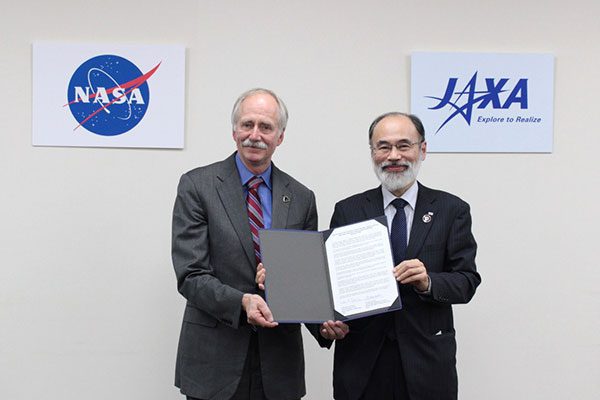

On Jan. 24, 2018, Japan Aerospace Exploration Agency (JAXA) and the National Aeronautics and Space Administration (NASA) met to exchange their views on space exploration. The agencies signed a joint statement affirming their strong mutual interest in continued future cooperation in space exploration.
Both agencies have established a strong and committed partnership throughout the many years of cooperation in all mission areas, including human exploration, Earth and space science, fundamental aeronautics, and especially through the International Space Station (ISS) Program.
Both agencies affirmed to expand this partnership in the field of space exploration, upon sharing their long-term vision for expanding human presence deeper into the solar system, by starting with extending human presence to an orbiting platform around the moon, that can benefit from contributions and technological expertise from both agencies, acting as an important piece of infrastructure for human access to the lunar surface and eventually to Mars.
Both agencies welcome on coordinating with their governments to enable an innovative and sustainable exploration program.